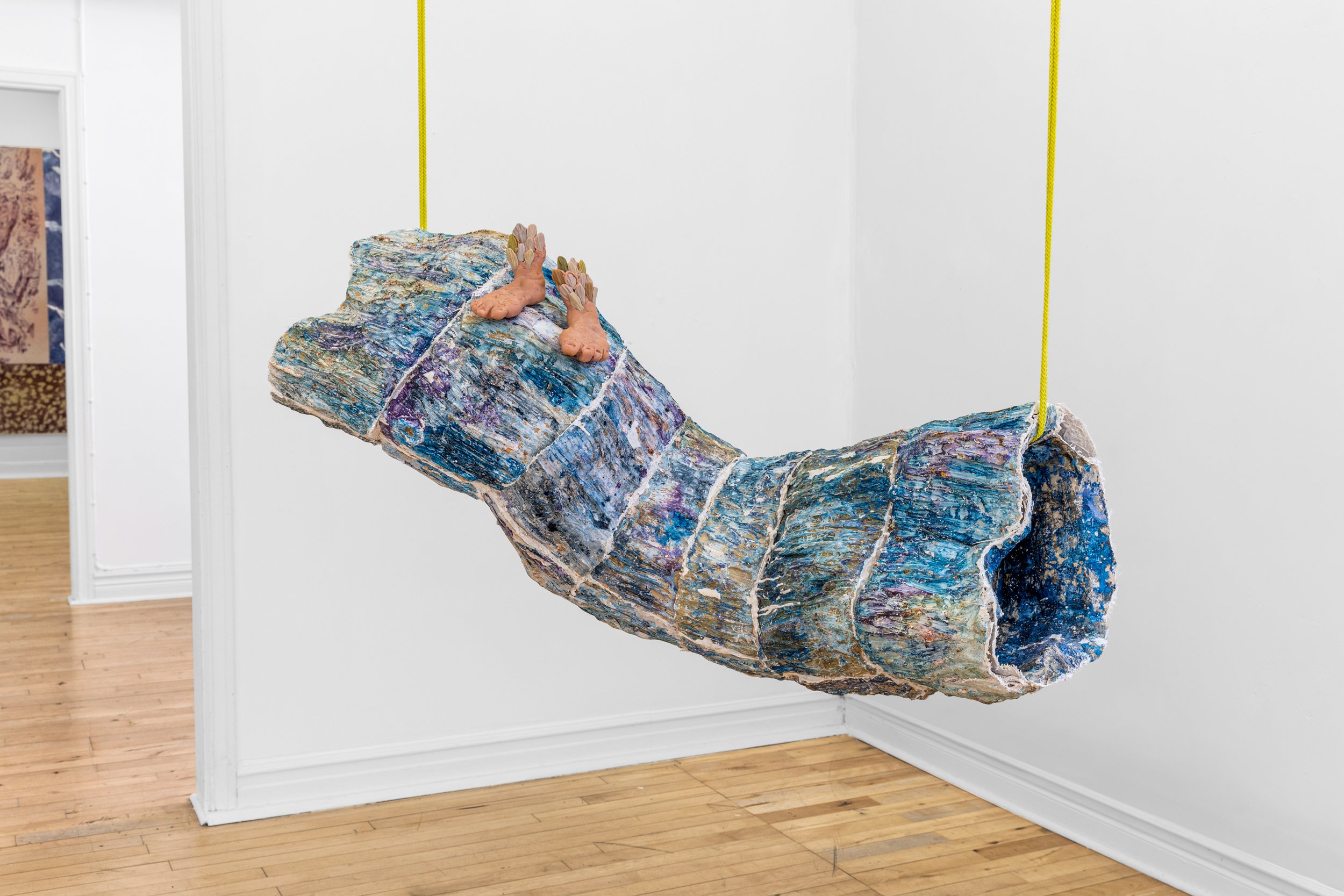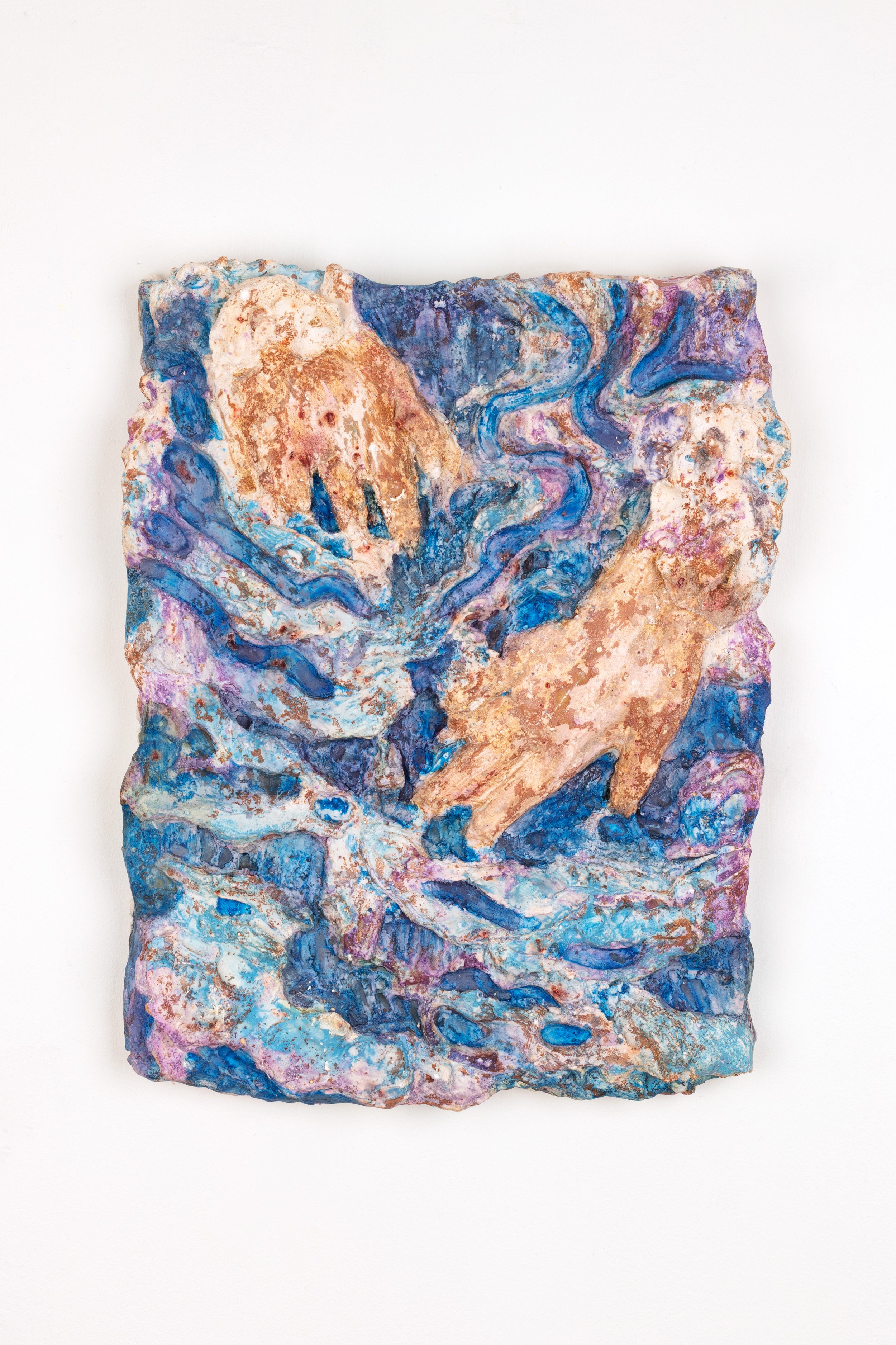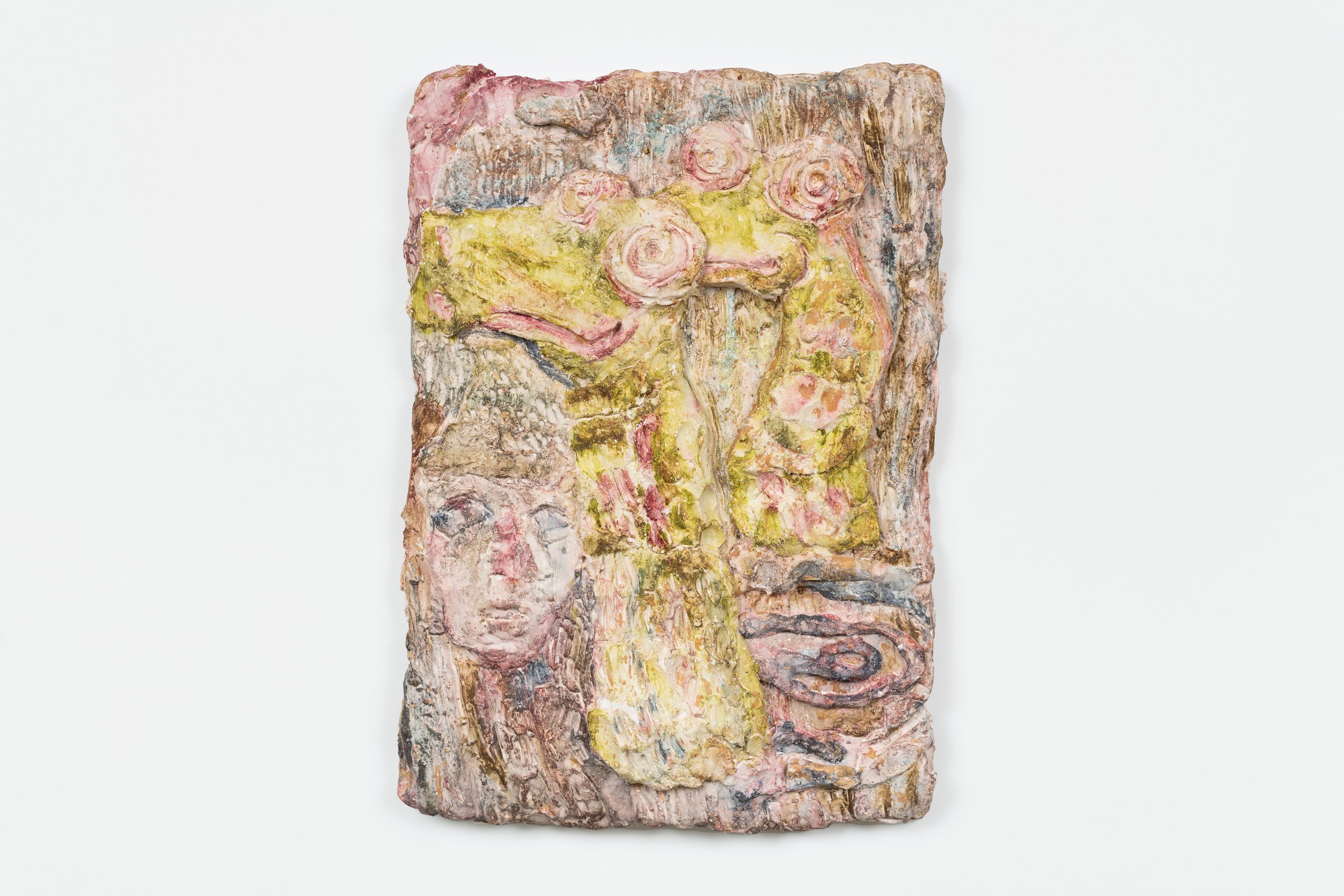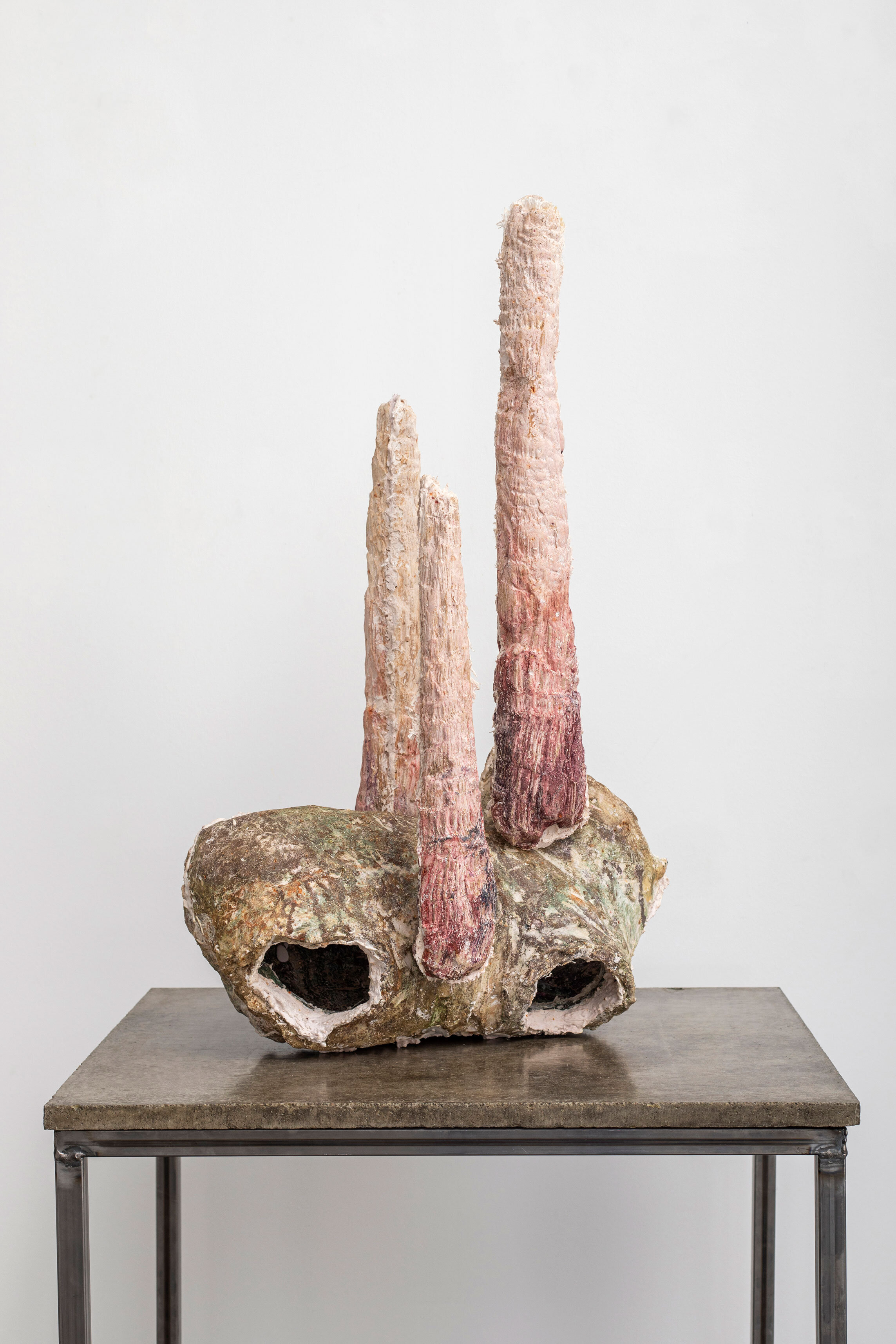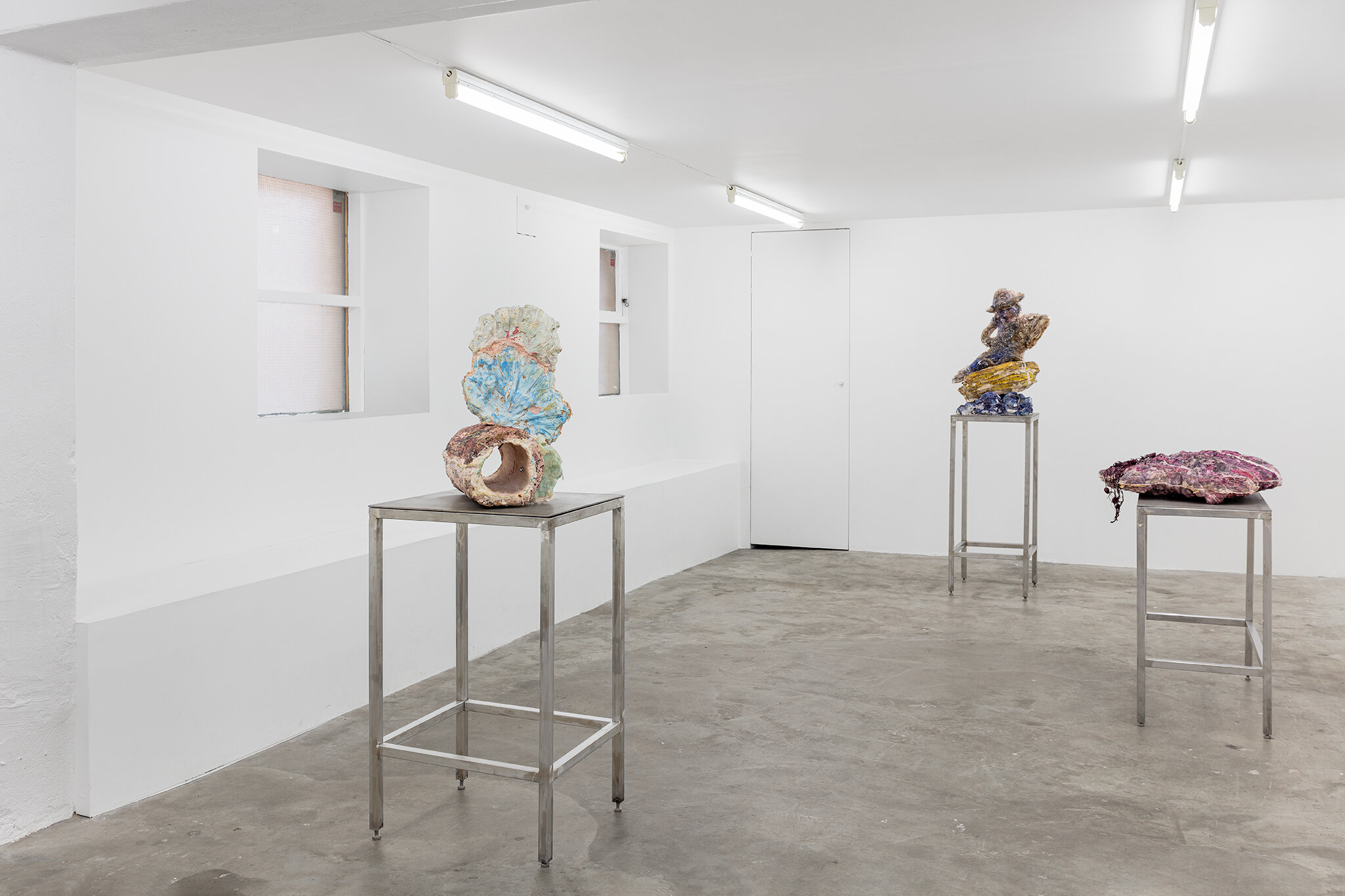Text by Gabrielle Paré
Stony masks. Votive offerings. Blind fossils. A drawing of the brittle calcium of an oyster shell, its ancient layers pushed outward by the new. These images belong to Sindre Hustveit’s collection of photos, from which his artworks emerge. His interest in material is evident from the images he collects: artifacts from bygone times and the residue of their transformations. For his solo exhibition, Slumbering Stones at Indre Østfold Kunstforening, Hustveit uses the visual language of archeology to make objects from a fossilized present.
The exhibition consists of freestanding sculptures, batik paintings and reliefs. All works are produced by processes which hold the artist at a distance. In the batik paintings, the earth tones are applied to the canvases by dyeing the textile in a vat, one colour at a time. In this way, it is a blind process, with Hustveit relying on his knowledge of how the material can be manipulated. In the sculptures, steel display cases contain rocky, almost petrified forms. These are cast in concrete and painted, not with pigment but by studding the concrete with ochre, verona green, shells, scales and other stones in the casting process. The reliefs, more overtly narrative with their depictions of uncanny and instinctive figures, are formed partly by the fragility of their material properties. They are born with patina, faded in places where the paint did not fully adhere to their plaster casts, giving the impression of weathered painted marble.
In many of Hustveit’s works there is a push and pull between the appearance of disintegration and growth. Like the slow life of a barnacle on a whale, at once solidifying its stony body while scarring the skin of its host. Or the stalactite in a limestone cave, its column is built by the same dripping water which erodes its cave’s walls. Material is always on its way somewhere for reasons that are just as well explained by alchemy as entropy.
The study of archeological artifacts is a way to measure what of our human experience has remained constant and what has changed over time. Hustveit is either inventing a past or imagining the future to which these objects belong. Either way, the work asserts that our lived experience is not static. There is too much potential to be and to become something else and to end. As with archeological objects, Hustveits artworks do not tell a concrete story; they only provide clues that need to be read and pieced together.





















